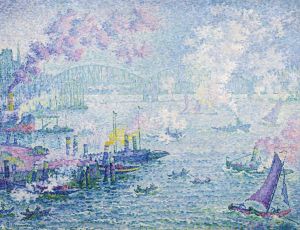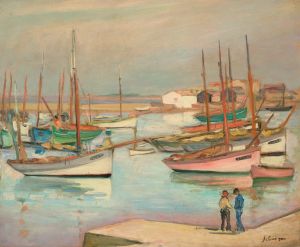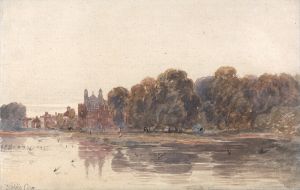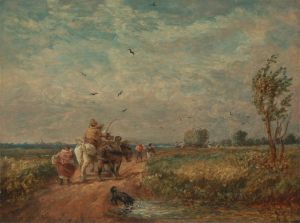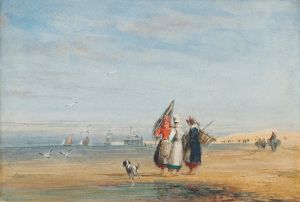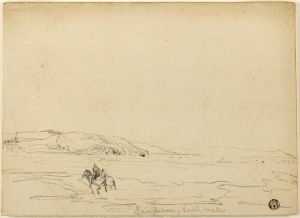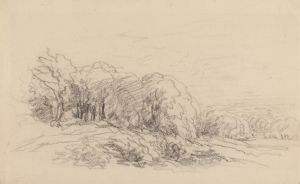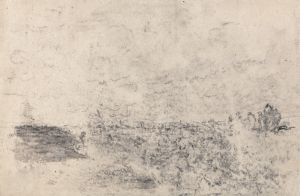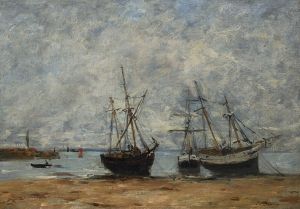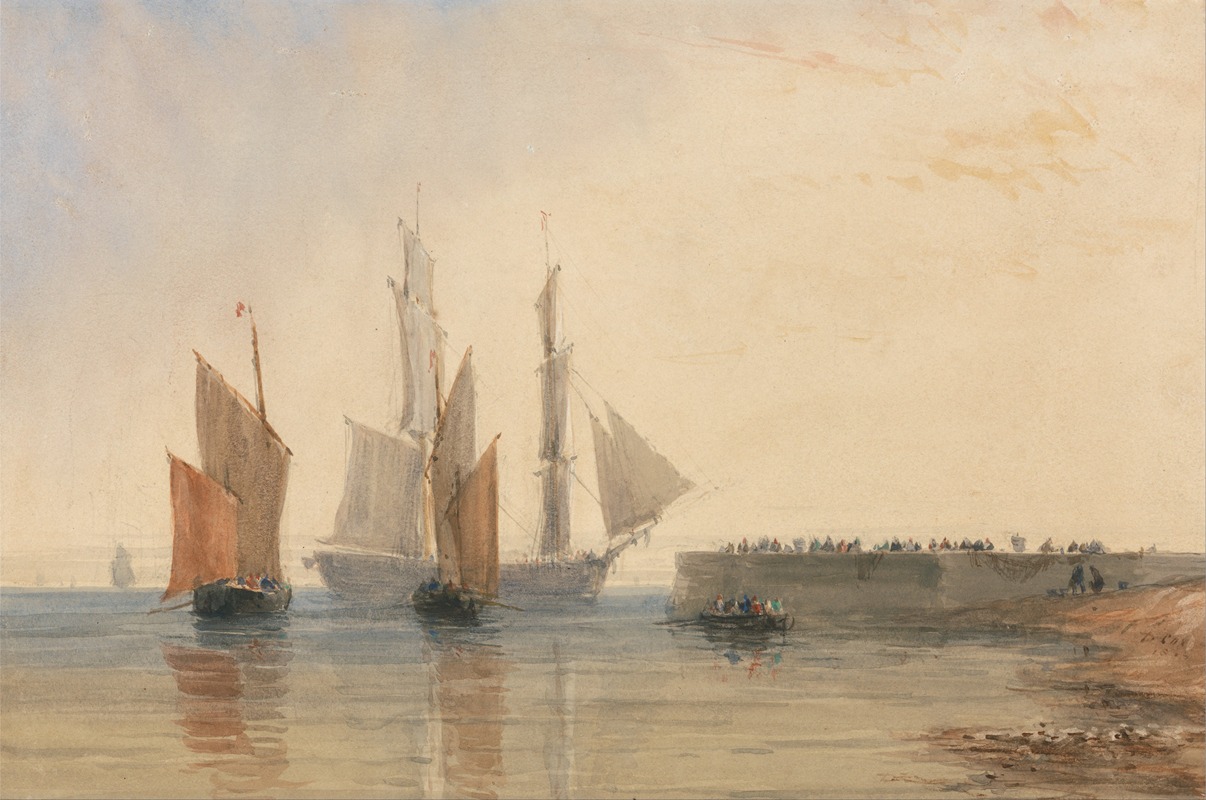
Entrance to Calais Harbour
A hand-painted replica of David Cox’s masterpiece Entrance to Calais Harbour, meticulously crafted by professional artists to capture the true essence of the original. Each piece is created with museum-quality canvas and rare mineral pigments, carefully painted by experienced artists with delicate brushstrokes and rich, layered colors to perfectly recreate the texture of the original artwork. Unlike machine-printed reproductions, this hand-painted version brings the painting to life, infused with the artist’s emotions and skill in every stroke. Whether for personal collection or home decoration, it instantly elevates the artistic atmosphere of any space.
"Entrance to Calais Harbour" is a notable painting by the English landscape artist David Cox, who was an influential figure in the development of English watercolor painting during the 19th century. Born in 1783, Cox was known for his ability to capture the essence of the English countryside and coastal scenes with a distinctive style that combined both realism and a sense of atmospheric mood.
The painting "Entrance to Calais Harbour" is an exemplary work that showcases Cox's skill in depicting maritime scenes. Created in 1850, this artwork reflects the artist's mature style, characterized by loose brushwork and a keen attention to the effects of light and weather. The painting captures the bustling activity of Calais Harbour, a significant port located in northern France, which has historically been a vital point of transit between England and the European continent.
In this work, Cox employs a dynamic composition that draws the viewer's eye into the scene, effectively conveying the movement and energy of the harbor. The use of color and light is particularly noteworthy, as Cox captures the interplay of sunlight and shadow on the water and the vessels. The sky, a crucial element in many of Cox's landscapes, is rendered with a sense of drama, suggesting the ever-changing weather conditions typical of coastal environments.
David Cox's approach to watercolor painting was innovative for his time. He often worked en plein air, directly observing and sketching his subjects outdoors, which allowed him to capture the transient effects of light and atmosphere with immediacy and authenticity. This method was somewhat unconventional during his era, as many artists preferred to work in studios. Cox's dedication to painting from life contributed significantly to the development of the plein air movement, which would later be embraced by the Impressionists.
"Entrance to Calais Harbour" is an important example of Cox's contribution to the tradition of English landscape painting. His ability to convey the mood and atmosphere of a scene with economy and expressiveness has earned him a lasting place in the history of art. The painting is held in high regard for its technical proficiency and its ability to evoke the sensory experience of being at the harbor.
David Cox's work, including "Entrance to Calais Harbour," continues to be celebrated for its influence on subsequent generations of artists. His paintings are held in numerous public and private collections, where they are appreciated for their beauty and historical significance. Cox's legacy is that of an artist who captured the spirit of the English landscape and its coastal environs with a unique blend of realism and poetic sensibility.





